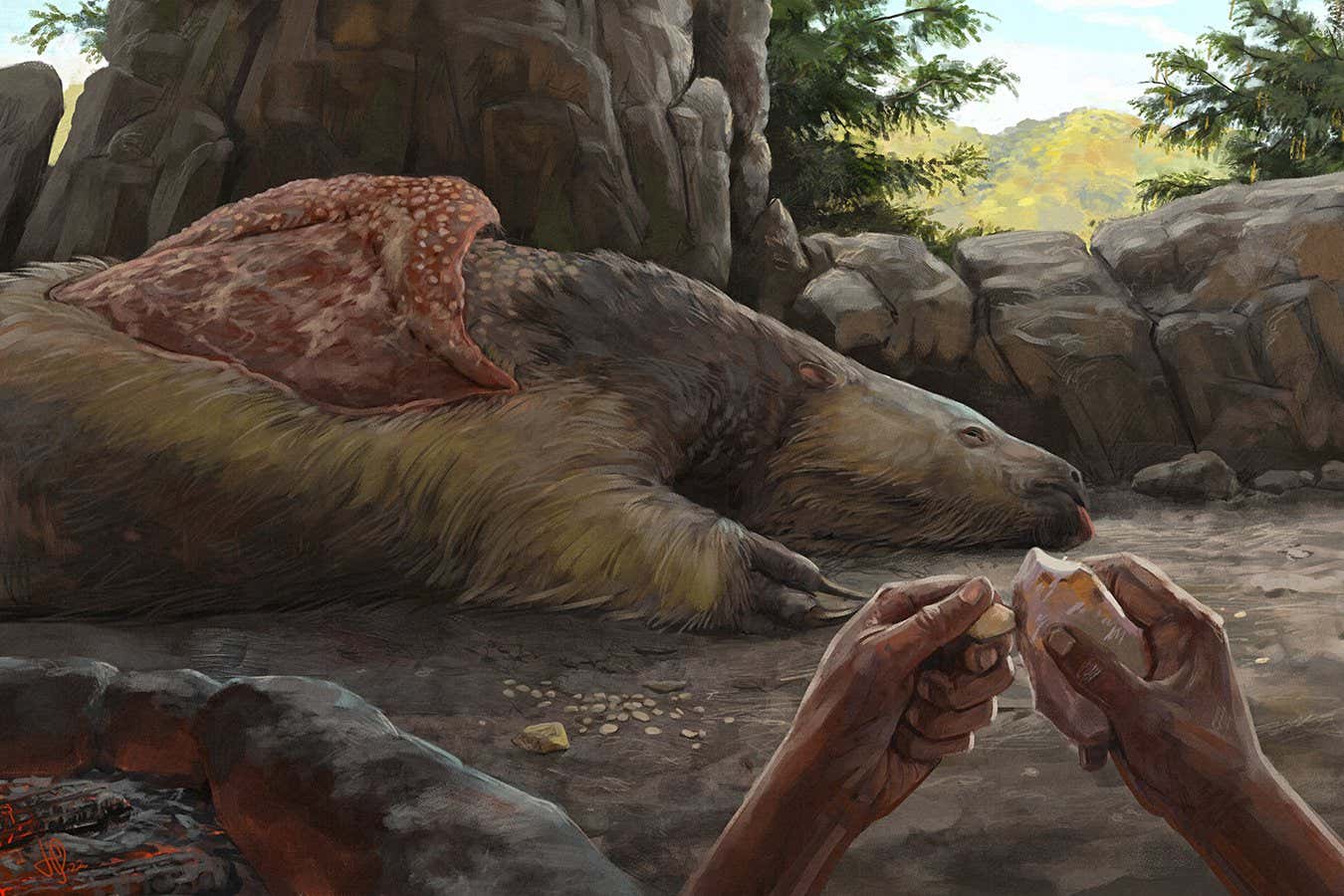Early humans living in South America carved giant sloth bones into decorative ornaments that may have been worn as jewelry. This discovery also suggests that people arrived in central Brazil during or before the end of the last glacial period.
Giant sloths, larger than polar bears and armored with bony plates, once roamed South America during the Pleistocene Epoch in the last glacial period. Climate warming and human hunting led to the extinction of these ground-dwelling sloths about 10,000 years ago. Some of their remains are preserved in cave shelters, such as the Santa Elina rock shelter in Brazil.
Although the giant sloth skeletons have mostly degraded, thousands of their fossilized bony dermal plates, called osteoderms, have been preserved. Three of these scale-like bones, estimated to be between 16,000 and 27,000 years old, have intrigued scientists due to their unusual shape and smooth texture. The bones had holes drilled near the border, suggesting they may have been threaded on a string.
Archaeologists have speculated that the giant sloth bones were modified by humans using stone tools. To investigate this, a team of researchers examined the bones using high-resolution microscopes and x-rays. Their analysis revealed scratches and gouges made by early stone tools, indicating human modification. The shape and texture of the bones could not be explained by natural erosion or animal bites.
The fact that the bones were shaped before fossilization suggests that humans arrived in the Americas before the end of the last glacial period. This discovery provides insight into how ancient people interacted with these now-extinct species. The smoothness of the bones suggests that they may have been worn daily as personal adornments. If this is the case, it is among the earliest evidence of personal artifacts in the Americas. However, further research is needed to understand the significance of these ornaments.
Thaís Pansani, a member of the research team, highlights the interest in determining whether the bones were used for decoration, fashion, or to signify belonging to a specific group. Regardless, it is clear that early humans were utilizing these giant sloth bones in some way.
Overall, this discovery sheds light on the creativity and craftsmanship of early humans in South America and provides a glimpse into their interactions with the unique fauna of the time.
Insights:
- The discovery of jewelry made from giant sloth bones suggests that early humans in South America had a sense of aesthetics and adorned themselves with decorative pieces.
- The presence of modified bones indicates that humans arrived in the Americas before the end of the last glacial period.
- These findings provide valuable insight into the interaction between early humans and the now-extinct giant sloths.
- Further research is needed to understand the cultural and symbolic significance of these ornaments.








